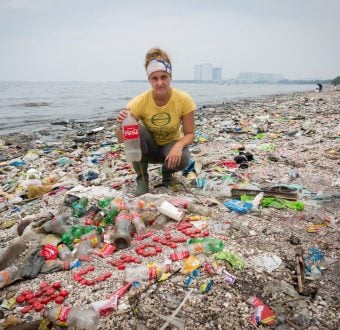The most noteworthy discovery from the sampling program undertaken by Greenpeace scientists was the presence of polybrominated diphenylethers (PBDEs), used as flame retardants, and phthalates, used as plastic softeners. The three sectors investigated by Greenpeace during the investigation were the manufacture of printed wiring boards (PWBs), semiconductor chip manufacturing, and componentassembly. The investigation also shifts focus of the debate over electronic waste, or e-waste, from the "recycling" of used electronics, and shows that the hazardous and often toxic life-cycle of these products can extend from the very beginning to the very end. Thus far, the fate and effects of the chemicals and substances generated during the manufacture and production of these products has been very poorly documented.The study also documents the contamination of groundwater aquifers at a number of sites, particularly around semiconductor manufacturers, with toxic chlorinated volatile organic chemicals (VOCs) and toxic metals including nickel. Contamination of groundwater is of particular concern, since local communities in many places use groundwater for drinking water. At one site, the Cavite Export Processing Zone (CEPZA) in the Philippines, three samples contained chlorinated VOCs above World Health Organisation(WHO) limits for drinking water. One sample contained tetrachloroethene at 9 times above the WHO guidance values for exposure limits and 70 times the U.S. Environmental Protection Agency maximum contaminant level for drinking water.The use of such toxic chemicals in manufacturing processes also poses potential risks to workers through workplace exposure.Wastewater discharged from an IBM site in Guadalajara, Mexicocontained hazardous compounds, including some (such as the potent hormone disruptor nonylphenol) which were not found at other sites. IBM's 'Supplier Conduct Principles Guidelines' state that suppliers should operate in a manner that is protective of the environment."IBM should act upon our findings and investigate activities at the site in order to prevent any releases of persistent organic compounds from the Guadalajara site," Al-Hajj stressed."The tragic and undocumented persistent contamination of people and the environment by the global electronics industry, which hides behind the anonymity of its supplier chain, must end. These facilities and the brands that pay for them must be fully investigated and the pollution must stop. Electronics manufacturing remains at the cutting edge of technological development and has a strong economic future. There is no reason why it should not also be at the cutting edge when it comes to clean designs and technologies,substitution of hazardous chemicals, greater worker healthprotection and the prevention of environmental pollution at its source," concluded Hind.
Notes: CONTACT: Steve Smith, Greenpeace, (202) 465-5352 or
[email protected]
Photos available at: http://usaphoto.greenpeace.org/020807hightech/
Video available at: usaphoto.greenpeace.org/Ewaste

